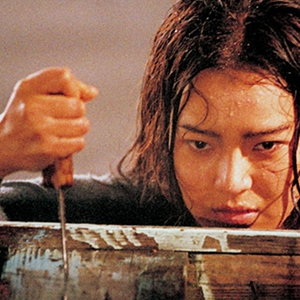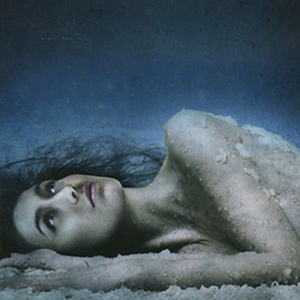This article is the first part in Rowena’s three part series on Contemporary Korean Cinema entitled ‘Kim Ki-duk and the Cinema of Embodied Unpleasures‘.
From 1996 to 2008, filmmaker Kim Ki-duk produced an astounding output of fifteen feature films, averaging at times two films per year. Each film perfect for your home cinema projector. Perhaps what is even more surprising is that unlike other filmmakers who emerged in the mid-1990s, Kim did not receive any formal training in filmmaking. But a background in visual arts he has, through his studies of fine art in France for three years at the beginning of the 1990s. Following that experience, he won several screenplay awards upon his return to South Korea, including his first-place submission to the Korean Film Council’s screenwriting contest in 1995. These prizes paved the way for his filmmaking debut a year later with Crocodile. Since then, this former factory worker, ex-marine, and priest-in-training never once looked back and proceeded to build a highly provocative, often controversial, and memorable filmography through a minimalist method of low-budget independent filmmaking. With his persistent themes of self-abnegation, metaphysical longing and interrogation, torture, trauma, isolation, physical and metaphorical journey, and the play between reality and fantasy, Kim has carved a place for himself within contemporary Korean cinema as well as world cinema.
With his persistent themes of self-abnegation, metaphysical longing and interrogation, torture, trauma, isolation, physical and metaphorical journey, and the play between reality and fantasy, Kim has carved a place for himself within contemporary Korean cinema as well as world cinema.
Admittedly, Kim’s place in relation to the Korean film industry is rather marginal, in terms of distribution and exhibition. This fact is perhaps due to his films’ negative and invasive themes of aspects of Korean society and history—which often veer into bodily harm and violence against women—or to his polemical statements to the public that denote a Napoleonic inferiority complex, or more likely, a combination of both as well as other things. By extension, Kim’s place in relation to contemporary Korean film criticism is also marginal. However many films Kim may have made since 1996, these numbers have not translated into searing fandom or analysis in South Korea. In fact, the routine greeting to a new Kim Ki-duk film—if it is released in South Korea to begin with—has generally been lukewarm at best or an absence of any recognition at worst. There have been exceptions to this routine, such as Crocodile and some of Kim’s other collaborations with actor Jo Jae-hyun. In contrast to this domestic cold shoulder has been the reception of Kim’s works abroad. With each new film, Kim adds more accolades to his name, such as in 2004 when he received Best Director awards for Samaritan Girl (2004) at the Berlin International Film Festival and 3-Iron (2004) at the Venice International Film Festival. His most recent coup was co-winning the prize of Un certain regard at the Cannes Film Festival for Arirang (2011) last year.

The truth of the matter is that Kim’s cinema is an auteur cinema of violent discomfort, unease, iconoclasm, and disorder. He attacks our sensibilities in the most visceral and vulnerable way possible: at the level of the body. He presents stories whose characters are defined by their bodies more than their intellect, and what they do to their bodies and to others’ bodies. Hence the frequency of rape, prostitution, mutilation, suicides or suicide attempts, killings, and disability to some extent, in his films. As such, his films constantly challenge our spectatorship, make us aware of it, and interrogate our relationship to these moving images and how we think about them. Kim’s cinema of embodied unpleasures begins immediately with his first film, which plants a lot of the thematic and formal seeds that will mark most of his subsequent films.
He attacks our sensibilities in the most visceral and vulnerable way possible: at the level of the body.
Crocodile is a raw-edged debut that follows the daily travails of several persons who live under a bridge by the Han River, including a very temperamental young man named Crocodile (played by Jo Jae-hyun). Crocodile finds the bodies of those who commit suicide by jumping off of the bridge and profits from what he finds on their persons. One of these bodies is that of the young woman whom he had raped that same evening; he saves her only to rape her repeatedly and forces her to live with him, an older man, and a young boy. Together, they create a pseudo-family. The result is less about moral uplift (though there is an element of redemption towards the end) than a mock family drama wherein violence is like a persisting cold sore that irritates and yet at the same time becomes the norm. But what little contact they have with society, individually or collectively, is no less different and often ends up in parasitic violence: with local thugs, the woman’s ex, a man who solicits Crocodile for sex. In this way, Kim already addresses the fine line between victim and perpetrator and the cycle of violence against oneself and others, which have placed his films in the line of critical fire. The film is episodic, with no attempt at a story with a clear, singular objective and fulfillment, and has little dialogue; what dialogue to be had is inevitably lined with subjugation, humiliation, anger, and violence, expressed often in grunts and growls. On this note, with Crocodile Kim also initiates the cycle of characters that bluntly use their bodies instead of words to express themselves and interact with anyone, because they do not know any better, they choose to do so, or they have been traumatized in some way. As with Crocodile, most of the men (and in some cases women) in Kim’s films are less characters than a kind of senseless or enigmatic force who do not (want to) understand their deeply marginalised and alienated places in life, revisited through the artist on a killing spree in Real Fiction (2000), the suicidal Hyun-shik and the mute, self-mutilating Hee-jin in The Isle (2000), the gangster Han-ki in Bad Guy (2001), the biracial Chang-guk in Address Unknown (2001); and the traumatized soldier Kang who goes on a killing spree in The Coast Guard (2002). Later on, even the face-obsessed couple of Time (2006) and death row inmate Jang Jin in Breath (2007) join this intriguing menagerie.

Crocodile’s portrait of (broken) relationships between men, women, and (to a lesser extent) children is arguably the backbone of most, if not all, of Kim’s subsequent films. Put another way, Crocodile’s pseudo-family establishes the theme of putting the notions of family and human relationships in general under extreme duress to explore the degree of violence and pain that are seemingly inherent in them, as a microcosm of society. Stunted socialisation skills are disturbingly uniform across a lot of Kim’s films, as both a consequence and symptom of the dog-eat-dog world that he chooses to show. Crocodile’s pseudo-family, and the beautiful morbidity of the last sequence underwater with Crocodile and the woman, is the germ of the family that owns a motel, houses a prostitute, and proceeds to rape her literally and metaphorically in Birdcage Inn (1998); the implosive mother-and-son relationship in Address Unknown; the absolutely disconnected father and daughter in Samaritan Girl (2004); and the abusive marriage disrupted in 3-Iron (2004), among others.
Stunted socialisation skills are disturbingly uniform across a lot of Kim’s films, as both a consequence and symptom of the dog-eat-dog world that he chooses to show.
But is ‘stunted’ really the appropriate word? Only partly, for some of Kim’s mute characters are so seemingly by decision—Hee-jin in The Isle, the old man and the young girl in The Bow (2005)—so that what can be construed as stunted may actually be resistance. The fact is that Kim often laces his characters and their behavior with ambiguity, magnified by the absence of dialogue, even when they are at their most animalistic.

Though not present in Crocodile, Kim also often laces his narratives with the play between reality and fantasy, most explicitly through Real Fiction and Dream (2008). His characters are often drawn in such a way that they occupy the liminal realm between actual and abstract/conceptual, especially through the oblique representations of violence that permeate his films and the dearth of dialogue. His characters can thus move seamlessly between realistic situations and more fantastic ones, buoyed by his use of actual locations and even his insistence on characters (often male) who express themselves more through their bodies than with words. As a result, the language of the body and face is everything. In this way, Kim’s direction of his actors is perhaps more akin to the world of dance theatre. He favours the immediacy and evolution of performance from his actors to drive his scenes, as if he were watching insects mate or fight under a magnifying glass. His use of the elements, especially water and its various phases, often creates a misty, otherworldly feel to his films that contrasts with the harshness of his characters’ behavior. The return-to-the-womb endings of Crocodile and The Isle and The Bow in its entirety are explicit examples of the ubiquity of water and the otherworldly feel of his works.
Kim also chooses some unlikely locations in which to contain his characters, prominent among them being by bodies of water: underneath a bridge by the Han River in Crocodile; the seaside brothel-inn of Birdcage Inn; the lone floating island-abodes and boats in The Isle, Spring, Summer, Fall, Winter…and Spring (2003), and The Bow; and the coastline in The Coast Guard; as well as other settings like the army bus-house in the Korean countryside next to an American army base in Address Unknown, and even the space of dreams in Dream.
With The Bow and the films that came after it, Kim appears to have mellowed out—in the only angst-ridden way that Kim can. Though The Bow, Breath (2007), and Dream have suicide attempts, they remain a far cry from the intensely tortured worlds of Address Unknown and The Coast Guard. But they are no less strikingly affective, especially Breath.
Following the production of Dream, Kim removed himself from the world of filmmaking for two years.
ROWENA SANTOS AQUINO
Film lecturer at CSULB. Transnational, multilingual, migratory cinephilia.